Field Trip "Art and Underground" Review
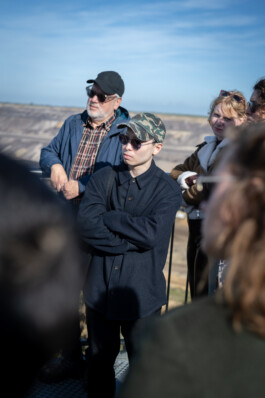
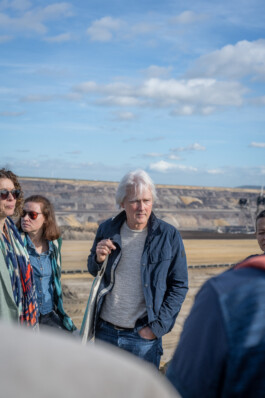
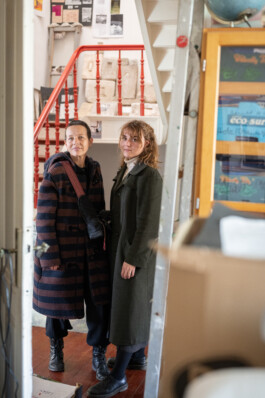
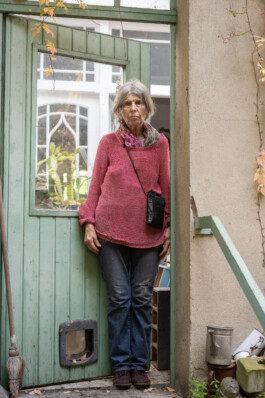
pictures above © Thekla Ehling
Date
October 26th/27th
Tagebau Garzweiler, Lützeratzh,
Hochneukirch-Jüchen, Heerlen
The history of the planet earth, of its plant, animal and human inhabitants lies hidden in the soil. Sometimes, it becomes visible in the form of archaeological or geological findings: witnesses of what once lived above the ground and a true treasure to their finders. Fossil energy sources are still considered to be one of those treasures – but not because of what they tell us about the past, but because of their economic value in the present and the future.
The coal that is extracted in the Rhine area originates from plants that grew there 5 to 25 million years ago. It can teach us a lot about what our planet looked like all those millions of years ago. And it determines what it has come to look like today.
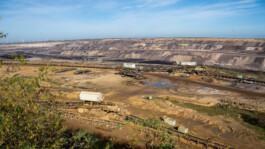
Tagebau Garzweiler lies in the very centre of the opening pit mining area in the Rhineland. Situated close to Mönchengladbach, the surrounding landscape is nothing out of the ordinary in this region: the plain land of the river delta, a motorway, a few forests, but mainly fields and smaller villages. And then there is the pit.
The group of Borderland Residencies artists and curators visited the Garzweiler area in late October. The excursion started at the Skywalk viewing platform right above the pit. There, the group met with Matthias Jung, a photographer who has worked around the mining area for many years and documented the changing of the area in his work. He guided the group on their day in and around Garzweiler.
For many participants, it was the first time they ever saw an open pit mine up close. The sight of the hole is nothing less than impressive, but also hard to grasp, even when standing on the platform right above it. Looking down, digging machines of over 100 meters in size can be seen – mechanical monsters, yet dwarfed by the enormity of the hole they sit in.
Normally, the viewing platform is as close as anyone can get to the pit. But in the village of Lützerath – the last village in the area that will be excavated for the mining –, climate activists have built a camp right next to it. For them, it has become both a place of resistance as much as a home. They also organized a vigil for Lützerath, an official and legal form of protest against the excavation of the village. The Borderland group visited the vigil after starting at Skywalk viewing platform. There, they were able to talk to some of the activists and learned about the plurality of the activist scene, their goals, and got a glimpse of what it means to dedicate your life to climate activism. What really stuck with the group was their way of living: to be willing to abdicate all comforts and safeties of civil life, but also experiencing a non-hierarchical alternative to life in a capitalist, performance-orientated society.
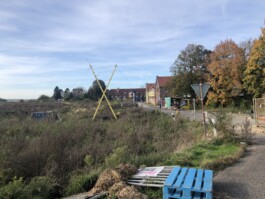
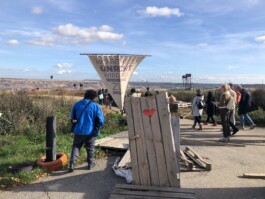
Still, the activist camp in Lützerath is more a means of awareness-raising for environmental protection than it is representative for the lives and opinions of the people and families that live in the mining area. Over the past 40 years, not only buildings and farm land had to yield to the mines, but primarily the people and animals who lived there. One of them is Inge Broska, who originally comes from the no longer existing village of Otzenrath. After the excavation of her home, she has relocated to Jüchen-Hochneukirch. It was then that she started to collect relicts from the destroyed localities. Today, she calls her home in Jüchen-Hochneukirch a “Hausmuseum” – a house museum where she preserves artefacts of her childhood home.
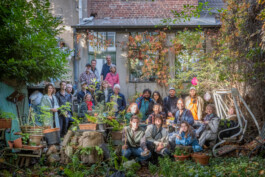
In 2022, the Hausmuseum is also part of the Borderland Residencies network. From September to November, sound artist Frauke Berg and visual artist Elisa Verkoelen are artists in residence at the Hausmuseum. Together with Inga Schneider and Jan Lemitz, both curators at Hausmusen, they assisted Inge in welcoming the Borderland group which included a lot of coffee, tea and cake as well as a tour through her museum.
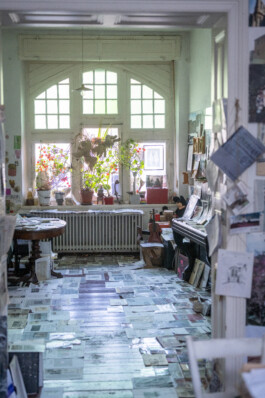
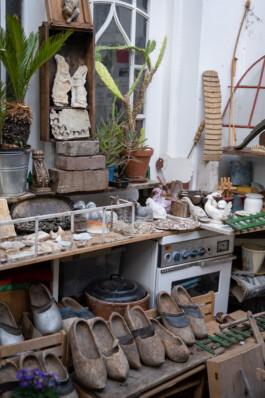
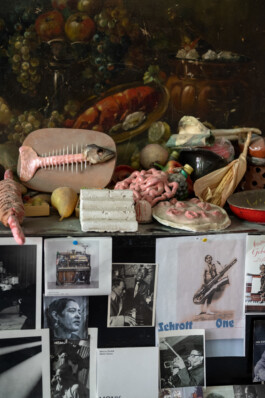
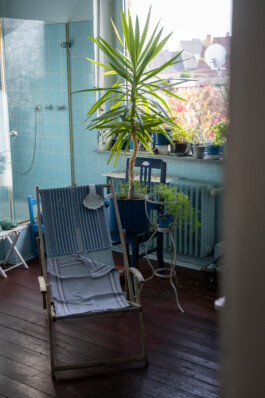
pictures above © Thekla Ehling
After the day in the Garzweiler area, the Borderland group travelled to Heerlen (NL) where another partner of the network gave them a warm welcome. The team of the exhibition and residency space Greylight Projects invited the borderlanders to dinner before the group returned the next day to visit the studios of Borderland artists Ben Weir and Kenneth Moreno-Kiernan. During their residencies at Greylight Projects, they both worked on side specific pieces that are linked to their residency in Heerlen. Weir researched buildings that were designed by Heerlen’s “local hero architect” Frits Peutz. He takes specific elements of Peutz’s architecture – like an unusual angle of a house that shows no apparent function – and transforms their shape into something new. For his residency in Heerlen, he chose to design a lamp that is based on a house in Heerlen that Peutz built.
The residency project of Kenneth Moreno-Kiernan takes another approach to his host town. Heerlen was heavily affected by the flood in 2021 which motivated Moreno-Kiernan to research water in Heerlen in general, but more specifically the movement and flow of water. He created clay vessels to better understand the process of retrieving water from a well and will work from this point onward.
After that, Wouter Huis from Greylight Projects gave a tour of the building that was a school before it became a home for art, followed by a guided walk through the neighbourhood of Greylight Projects in Heerlen. When learning about the history of the city, a continuity from the day before became apparent: In the 20th century, coal was extracted right in the municipal area of Heerlen. Today, most of the remaining mine building have been deconstructed. But while the coal industry is not as visible as it used to be, it remains a part of every Heerlen family’s history.
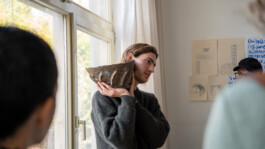
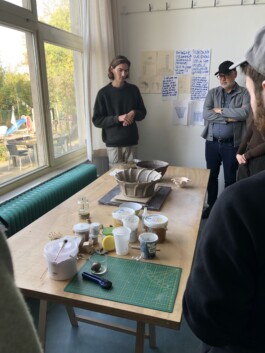
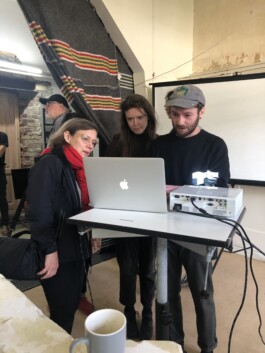
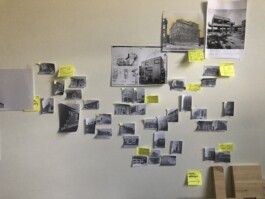
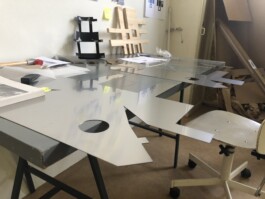
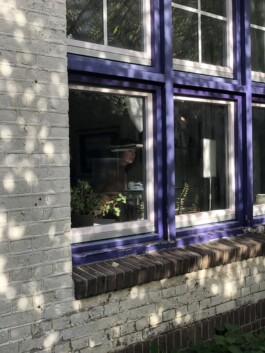
The two-day field trip revealed how heavily the Borderland EuRegion has been influenced by the extraction of coal. Over hundreds of years, it has not only determined the outer appearance of the region, but the lives of thousands of people who lived and worked with the coal. Even when, in some places, the traces of that industry have disappeared along with the coal, they still remain. They become visible to those who look – not only in the soil that no longer is in the ground, but in the history of the people of the borderlands.